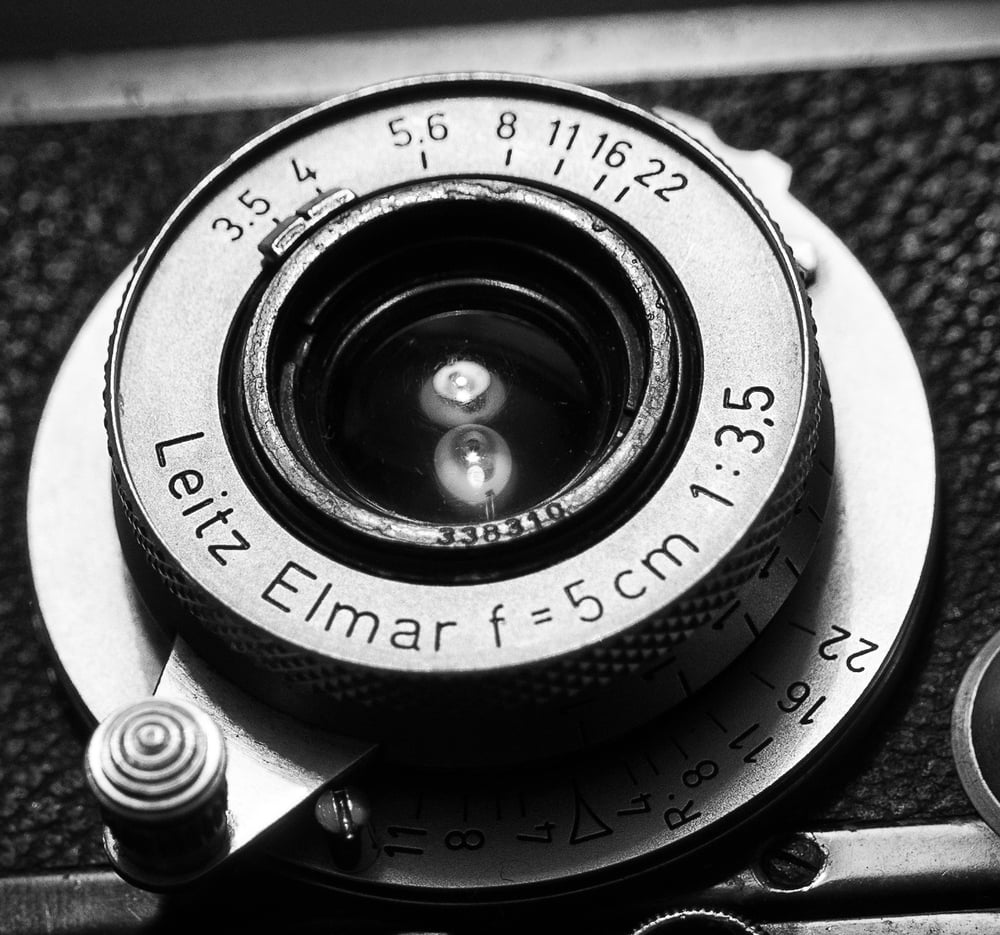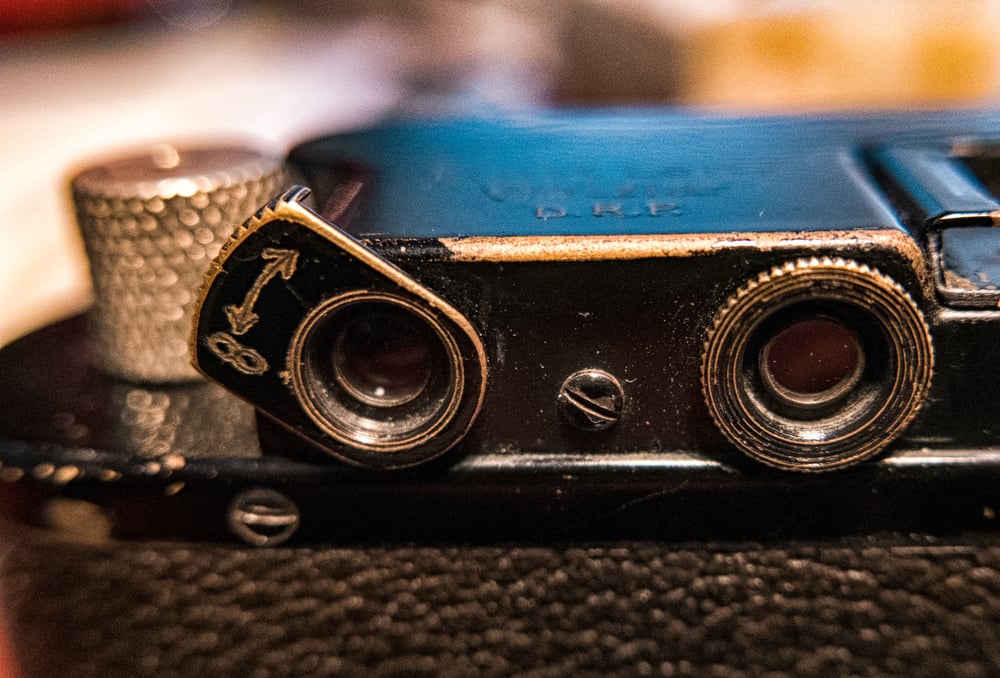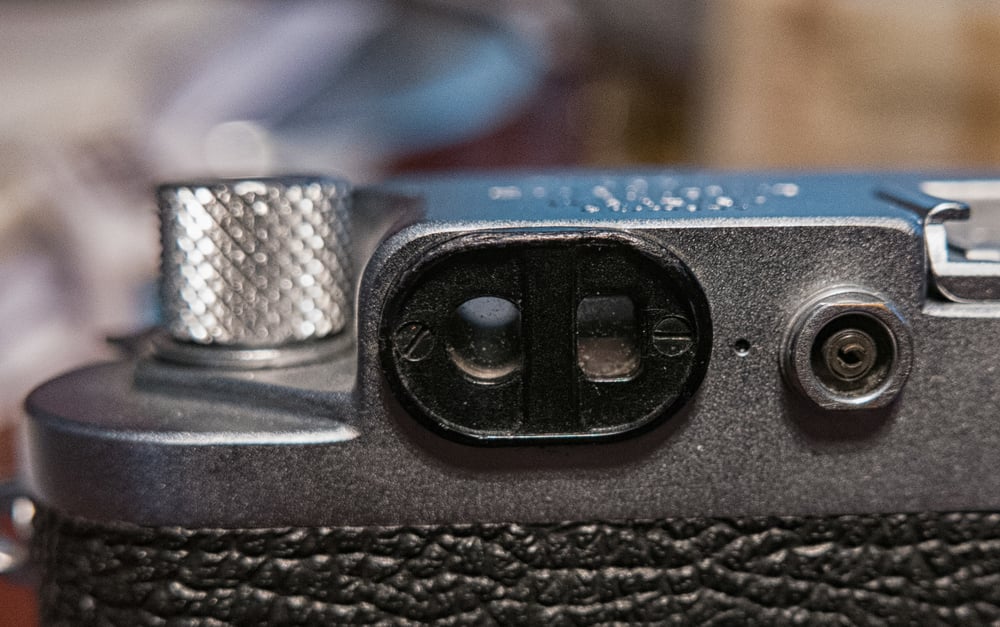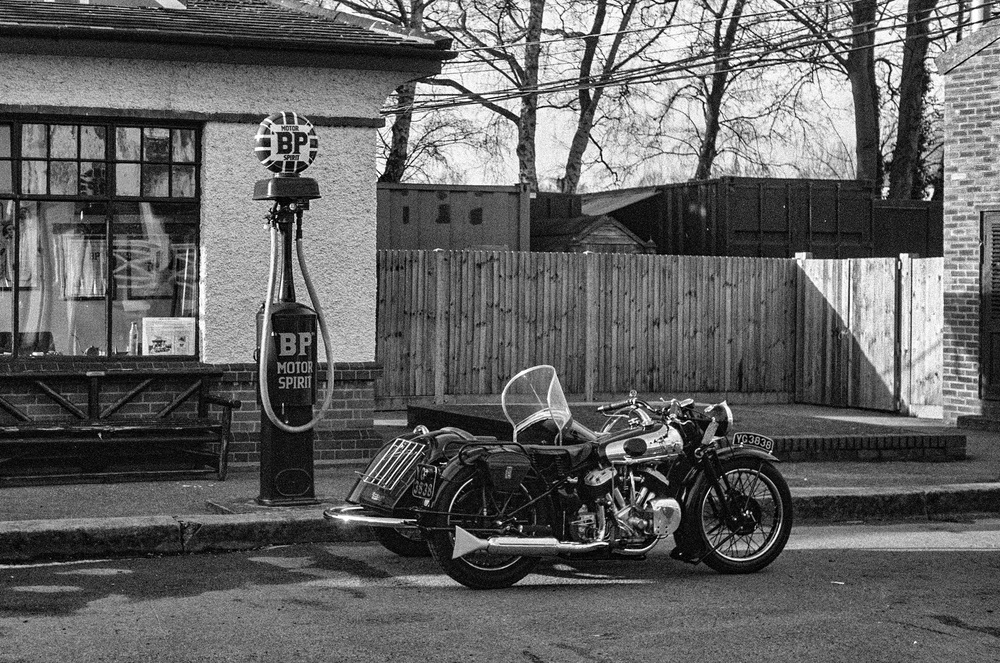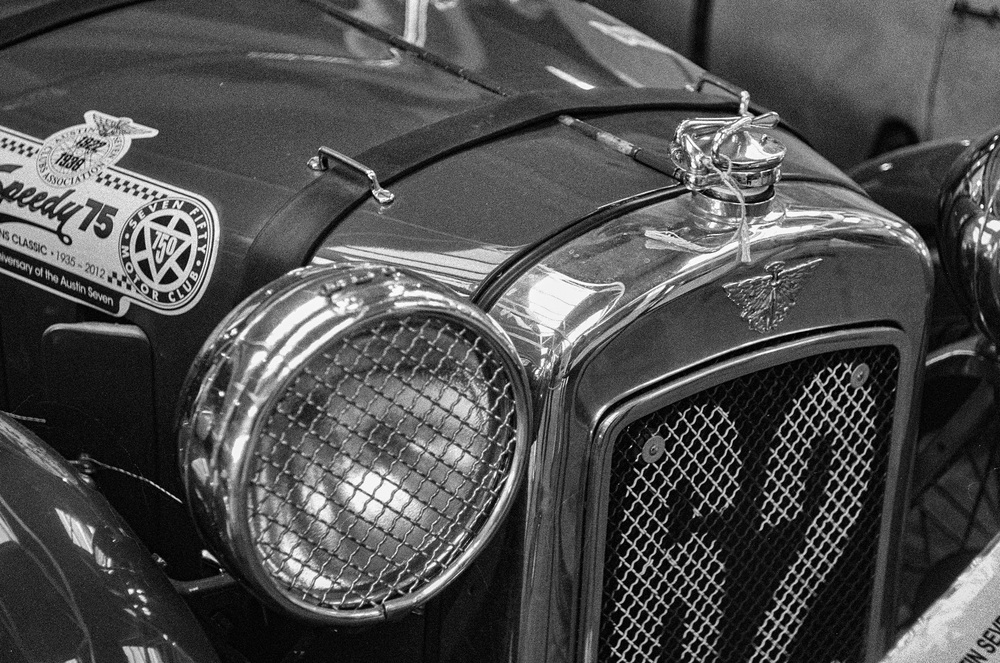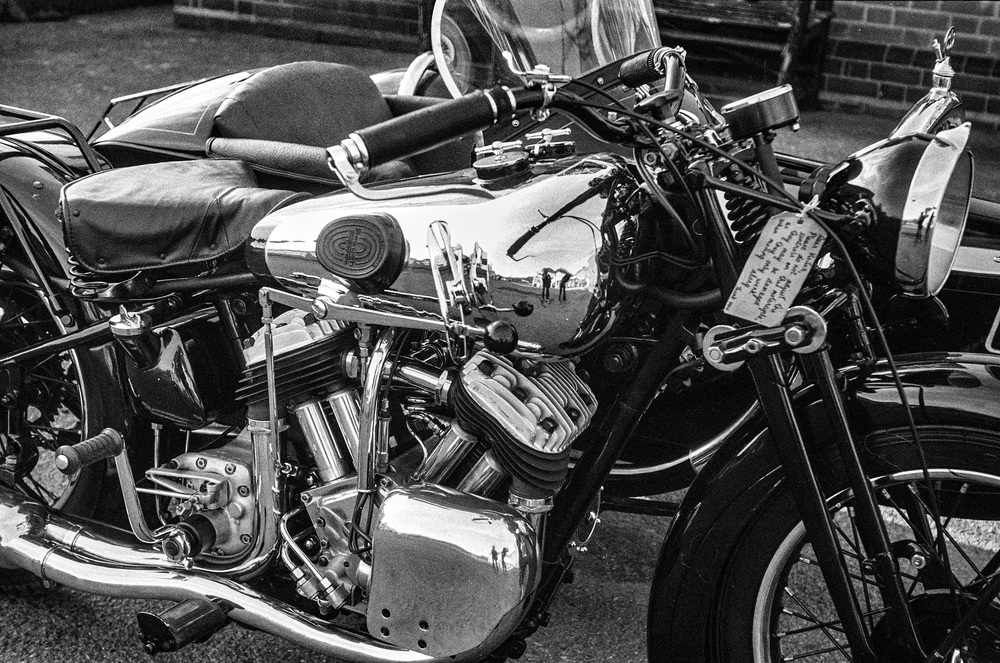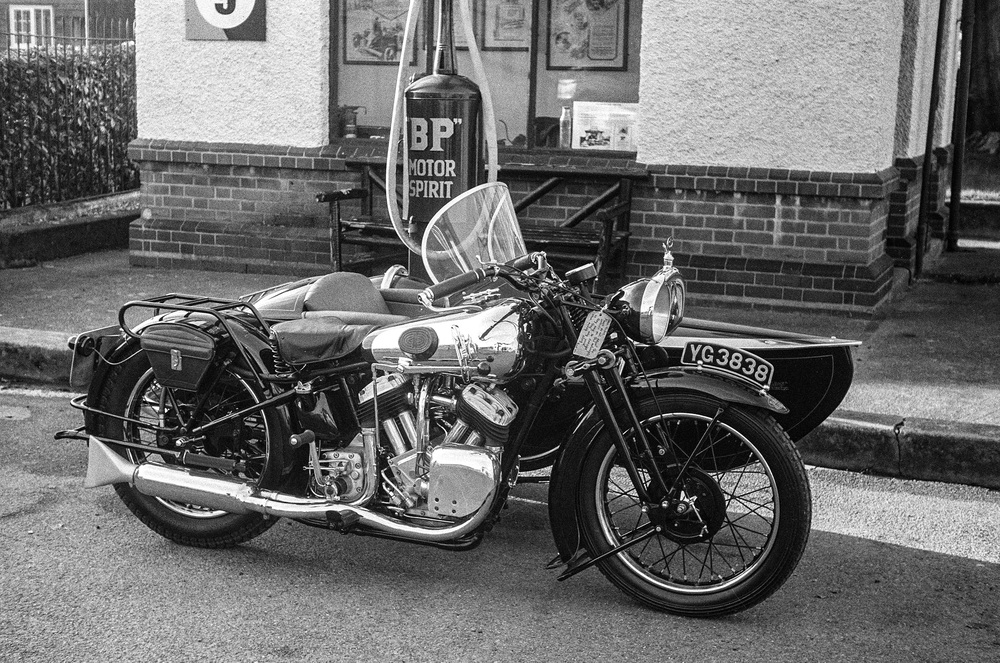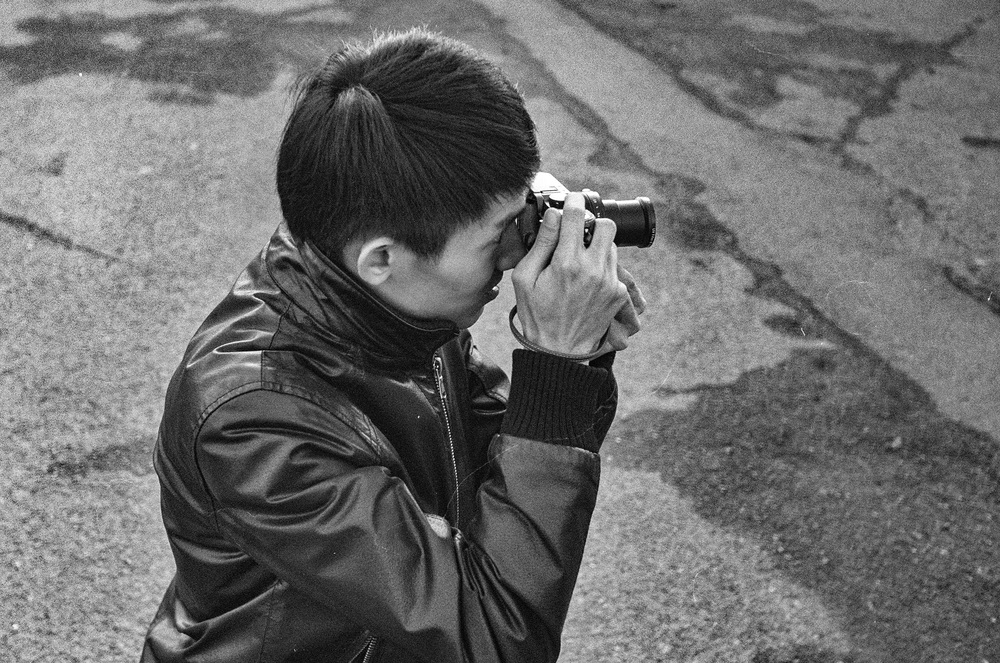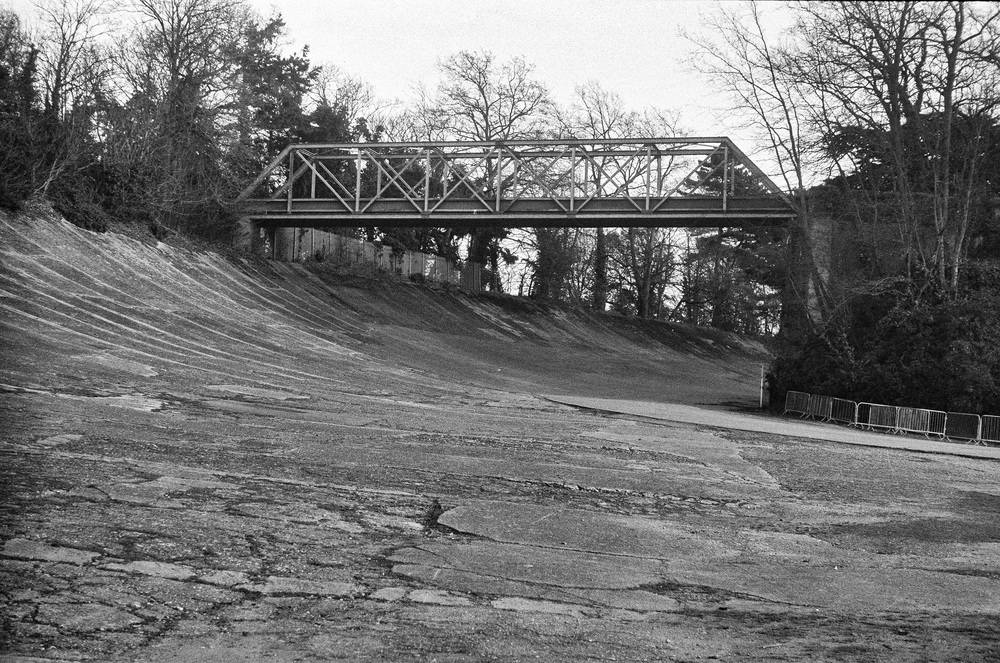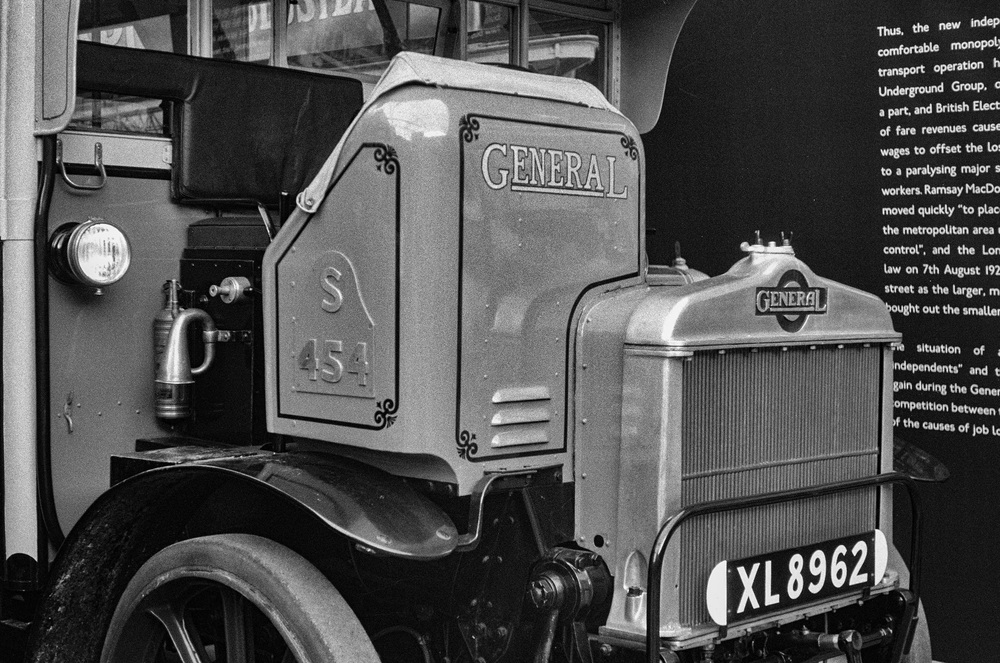I am easily led. No sooner did I see William Fagan’s Three Little Maids piece on black 1930s LTM Leicas than Gear Acquisition Syndrome kicked in big time. I already own one screw-thread camera, a IIIf from 1953, but I have had my eye on a black mid-30s version for a long time. William’s enthusiasm tipped me over the edge.
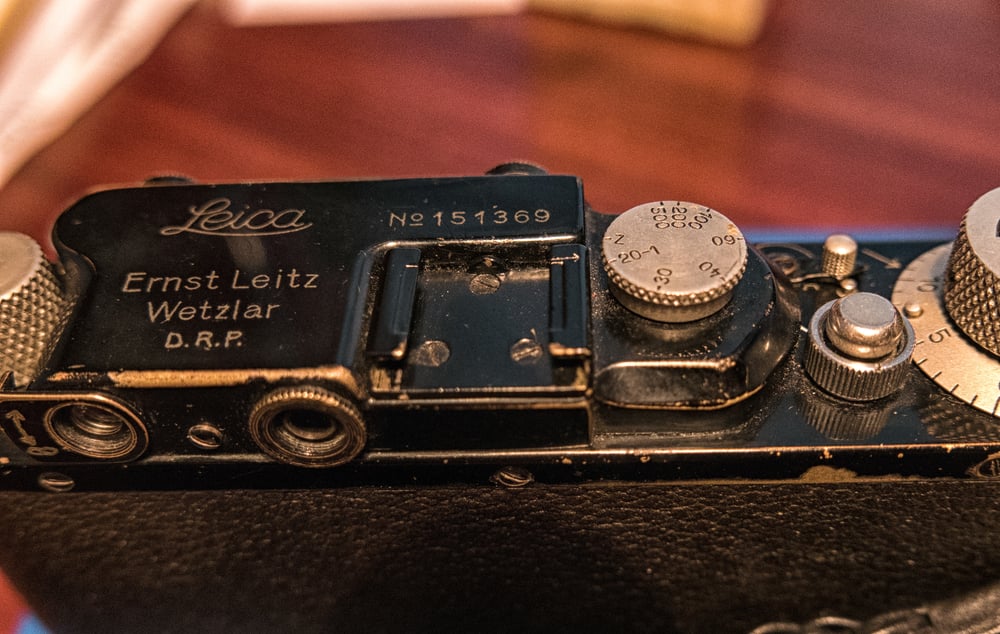
From Christmas I had a few gifted pounds in my pocket so I was down at Red Dot Cameras on Monday—first day back at school for them—to pester Ivor and Brian about a black II or III. Ivor Cooper, who tends a surprisingly large garden of old Leicas at his Old Street store, picked out this 1935 Model III and my resistance wilted immediately. Once I had it in my hands I couldn’t let go and it was then only a matter of handing over Great Aunt Bertha’s fortuitous Christmas present.
Inspection
But Ivor doesn’t let an old camera out of the shop without a careful inspection. He pronounced the III a good user, with a recently replaced curtain and shutter times sounding pretty good. It needs a bit of external TLC as you can see from the dust around the dials, but the gentle brassing of the top and bottom plates is generally regarded as an aesthetic advantage. This looks like a camera that has had just a few careful owners.
William, who knows more than a thing or two about ancient Leicas, points out that the black versions, with nickel dials and knobs, were a cheaper option in the 1930s, appealing to those who wanted the Leica precision but couldn’t afford the extra £5 or so for the more desirable chrome finish. Now, after 80 years, the converse is the case. Black and nickel models are now considered to be the more desirable and fetch a premium these days.
Lens quest
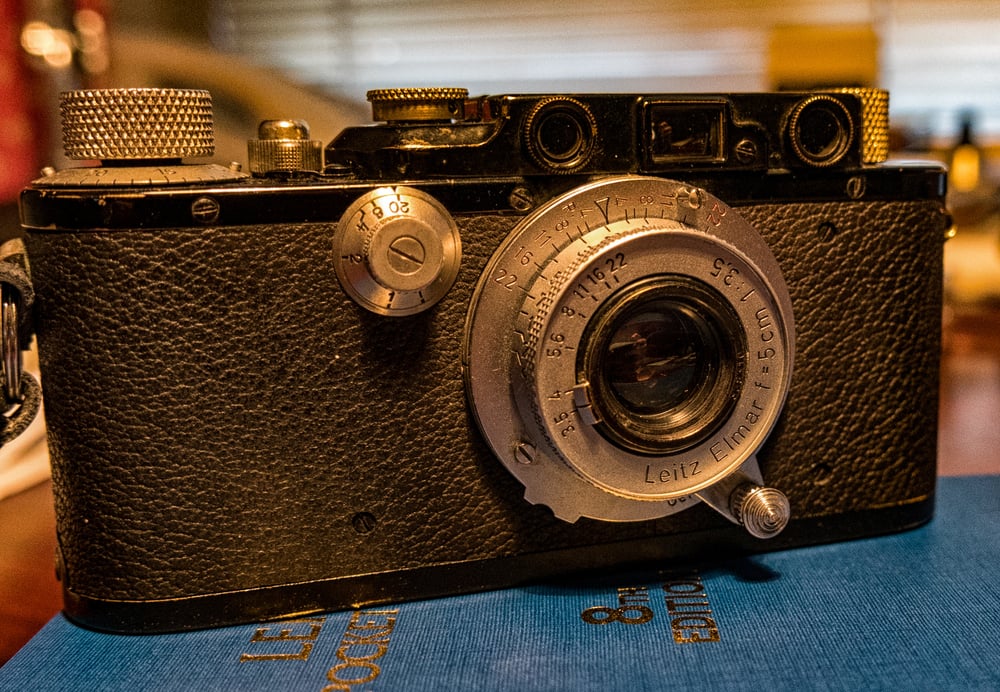
My new toy, though, was just a body. It would be a pity to stick on an inappropriate lens, even though I do have a couple of later chrome screw-mount optics. William strongly recommended the f/3.5 Elmar collapsible, the Barnack-designed “standard” lens that is so typical of the period. When pushed back into the camera body, this lens is absolutely tiny and makes any thread-mount Leica genuinely pocketable. William favours a nickel version (they were made in both nickel and chrome up to 1936) to match the black and nickel cameras. I don’t have one.
Still, I had a rummage through my collection and found a suitable 3.5 Elmar in chrome, but with a matte finish which doesn’t look too out of place against the backdrop of the nickelware on the camera. This particular lens I acquired at last year’s Bièvres Camera Fair near Paris. I’d had my eye on it during Saturday trading but I enlisted Ivor Cooper to do the haggling (he’s good at it). The following day he was able to snap it up for the equivalent of £85. In view of the all-round good condition that’s a fair price. It was manufactured in 1936, a year after the Leica III so it is an almost perfect match.
Tip for novices
By no means an expert with LTM Leicas, I was impressed by Hamish Gill’s recommendation that any budding photographer should learn the ropes by using such a superb mechanical device. As a teaching tool to appreciate the basics of exposure, these old cameras are unparalleled. They are pretty, too, and effective stimulators of the GAS zone.
This is my second screw-mount Leica, after the later 1953 IIIf. Although both the 1930s and 1950s cameras are basically very similar, there are differences in detail, most obvious being the closer spacing of the rangefinder and viewfinder windows on the later device. On the earlier model the centres of the two windows are 20mm apart, forcing a deliberate movement of the head/eye between the two.
For those not familiar with the pre-M Leicas, the rangefinder is in the left-hand window while the viewfinder, for composition, is in the right. Both are tiny spy holes which will surprise users of Ms who have the advantage of a much larger window as well as the convenience of having the rangefinder in the centre of the viewfinder.
Origins of the rangefinder
An integrated rangefinder first appeared on a Leica with the II Model D in 1932. The innovation of a combined rangefinder and viewfinder, which was first seen on the M3 in 1954, gave its name to the current M range. Screw-mount cameras had had two windows, one for the Entfernungsmesser (distance measurer, rangefinder) and the other offering a viewfinder (Sucher, think “seeker” in English) for composition. With the M3, the two windows were combined in one larger window which the designers called a Messsucher or range-viewfinder. Hence Leica M.
Above: The wide-spaced finder windows were standard up to 1938. The 1953 IIIf on the right illustrates the newer twin windows. The diopter adjustment on the old camera (pivoting on the window) is prone to moving out of position. On the newer camera the lever is concentric with the film rewind knob and stays where it is put
Using these two windows on the older cameras for the first time is something of a shock. They really are tiny; not only that, it takes some getting used to the idea of focusing and then moving to the adjacent window for composition. After some practice, however, it becomes second nature. It works effectively as you will find if you buy one of these cameras.
Up to 1938 with the introduction of the IIIb model, Leicas had widely separated rangefinder and viewfinder windows. The IIIb and subsequent models, such as the IIIf, had these windows close together. My 1935 III has the windows clearly separated. Having now tried both configurations, I am not sure that I don’t prefer the wider spacing of the earlier cameras because there is no doubt which window you are looking through. With the later design things can sometimes get confusing and I have occasionally found myself trying to focus through the viewfinder.
Nevertheless, you will also understand why the M3 eventually spelled the end of the dual-window system. The Messsucher is simply in a different league. Screw-mount cameras continued, as a cheaper option in the form of the IIIg (which had a much larger, M3-style viewfinder alongside the small rangefinder window) until 1960. The IIIg is now a much sought after camera and can cost more than a contemporary M3.
Film winding
Using a pre-1954 Leica takes some acclimatisation. It is an altogether more leisurely business than using, say, a modern M7. The film has to be wound on by knob; the quick advance lever first appeared on the M3 and initially in two stages—the original double-stroke, to minimise the danger of film breakage, followed by the single-stroke in 1957 (from number 915251).
Despite the large knob instead of a lever, winding either of my two IIIs is very easy and is a triumph of mechanical precision. It soon becomes second nature and I don’t miss the rapid advance lever as much as I thought I would. This week’s newly acquired 1935 III is limited to a minimum shutter speed of 1/500s while other models in the range, including my 1953 IIIf, offered 1/1000s.
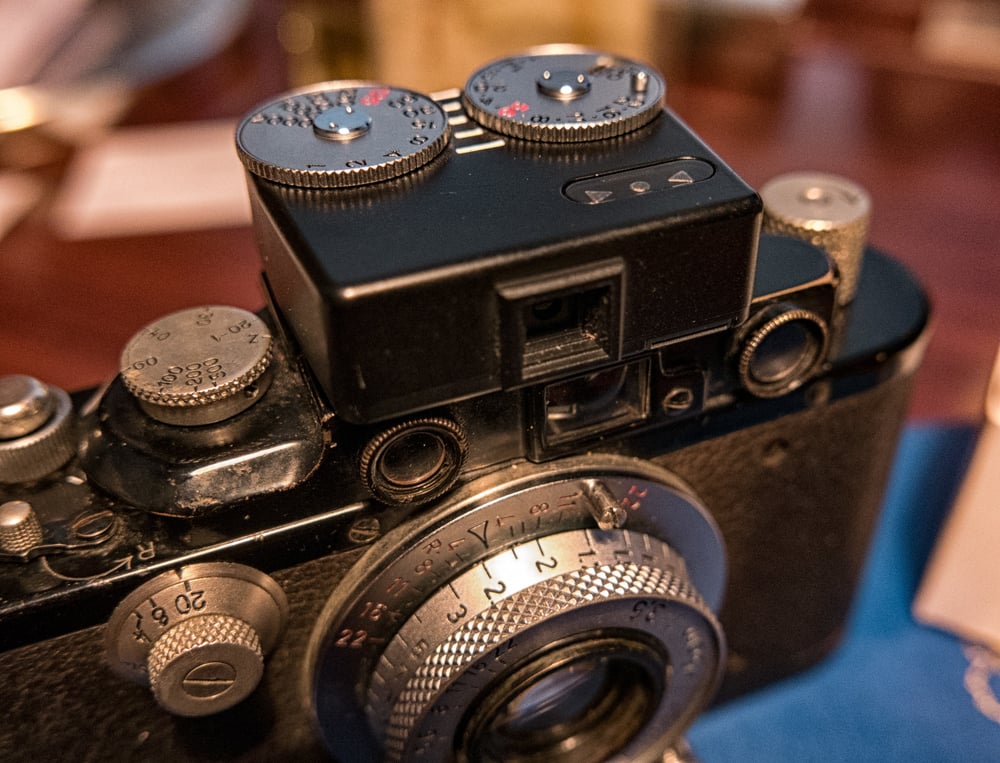
The early standard 50mm f/3.5 Elmar lens is slightly more fiddly to use than later versions of the Elmar such as the modern f/2.8 Elmar-M. On the older model, which was in production from 1930 to 1950, the front-mounted aperture scale (f/3.5-f/16 or f/22) encircling the lens is quite stiff and needs a more deliberate and involved action than on modern lenses.
Exposure
Exposure? Well, none of these cameras has a light meter to make things easy. Even the M3, M2 and M4 (and the current M-A) manage without a meter. Most old-hand photographers will tell you that they can guess the exposure, using a variety of rules and mnemonics to perform the conjuring trick. I’m not so sure and rely on the occasional check with a separate meter or an iPhone app. If I do want to mount a meter on a camera, my favourite for reliability and easy of use is the pretty Voigtländer VC Meter II which can still be bought new. My black version looks good on the old Model III. A light meter helps in practice but it is by no means essential. With a tad more experience, I imagine, I will soon be joining the smugmugs with their fingers in the wind.
All the screw-mount Leicas are bottom loaders without the help of the hinged back door that came with the M3. Loading a film is a bit more involved, particularly since the camera demands a longer film leader than is now provided on 35mm stock. Back in the day films were available with this longer leader. Now, the film has to be trimmed by hand before it can be loaded. While this sounds a little involved, it is really quite simple once you’ve done it a couple of times. See this entertaining video, although note that he had done the messy film trimming before starting the camera rolling.
Fiddlesome but forgiving
By modern standards, the screw-mount Leicas are undoubtedly more fiddleful and needful of attention than an M6, M7 or MP (and certainly more so than a modern digital). But the modern digital has so many controls and such a plethora of options that you could be dithering when that decisive moment comes along.
I’m not suggesting in any of this that you should give up your modern digitals and take the time machine back to 1935. These old cameras have their place, they can be addictive and, whatever else they are, they are huge fun to use. Film in general is experiencing a renaissance, particularly among younger photographers and most decidedly in the Far East. It is a reaction to digital bloat and to the snap-happy mentality we now suffer from. In the days of film, with 36 exposures at your disposal, every frame had to count. John Shingleton makes this clear in his excellent photo tour of India.
The screw-mount Leicas are forgiving. They have a simple set of controls that you can learn easily and, in so doing, assimilate the essentials of photograph. They are as capable of taking good photographs as a modern film camera, excepting that the older thread lenses can be somewhat softer than their modern equivalents. Yet they often have a unique character absent from modern lenses.
These cameras are small and compact, the very essence of film camera design. My ‘new’ III, with its contemporary f/3.5 Elmar, weighs only 600g compared with a more mainstream Leica M3 and 50mm rigid Summicron which is a third heavier. It fits well in my hands and is a joy to use. It is probably as much of an investment as you can get these days.
As for that decisive moment, well, Cartier-Bresson used one of these screw Leicas through much of his career and he didn’t miss a trick.
My thanks to William Fagan for reading this article and giving of his advice
The first roll
Where better to shoot the first roll in the 1935 Leica III than Brooklands Museum in Weybridge, Surrey? Here in the 1930s, the heyday of motorcycle car car sport at the famous race track, the Leica and f/3.5 Elmar was in its element. This is the camera that would have been in the hands of affluent racegoers in those pre-war years. It is a contemporary of the Brough Superior and sidecar and of the Austin Seven, although the London General bus in the on-site London Bus Museum dates from over a decade earlier.
See also: Leica III back on track at Brooklands after 80 years
____________________________________________________________________________
¹ Since publication, when Wiliam had a chance to see the photographs, he noticed an anomaly with my f/3.5 Elmar. While the serial number definitely dates back to 1936, the lens itself has all the hallmarks of a later version, perhaps as late as 1950. It has the 3.5-22 aperture range instead of 3.5-18 of a mid-30s example, and the red depth-of-field scale, both of which indicate a lens manufactured after 1949. The generally good condition of the lens supports this theory. William is investigating further and we hope to have a plausible explanation soon.
